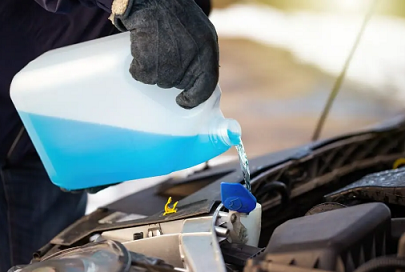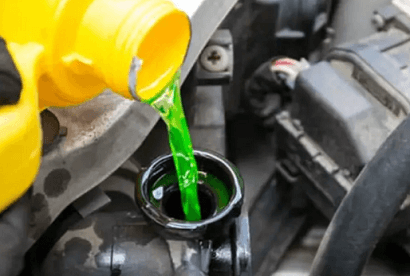After adding coolant, it is recommended to run the engine for at least 10-15 minutes. This allows the coolant to circulate properly and ensures optimal engine cooling.
Maintaining the optimal temperature of our vehicles’ engines is crucial for their smooth operation and longevity. One important aspect of engine maintenance is adding coolant when needed. However, after adding coolant, it’s essential to run the engine for a specific period of time to ensure its proper distribution.
We will explore the question of how long one should run the engine after adding coolant. By understanding this, car enthusiasts and owners can ensure that their engines are well-cooled and functioning optimally. So, let’s delve into this topic and get a clear answer to this important question.
Importance Of Running The Engine After Adding Coolant
Running the engine after adding coolant is of utmost importance as it ensures proper circulation and distribution of the coolant throughout the engine. The coolant helps in maintaining the engine’s optimal temperature and preventing overheating.
When the engine is running, the coolant flows through the radiator, engine block, and hoses, cooling down the various components. This helps in dissipating heat and avoiding any potential damage caused by excessive heat.
Another reason for running the engine after adding coolant is to prevent the formation of air pockets in the cooling system. Air pockets can block the flow of coolant and lead to overheating or uneven cooling in certain areas.
By running the engine, the coolant gets adequately circulated, pushing out any trapped air and ensuring a smooth flow.

It is essential to give the engine enough time to reach its normal operating temperature. This allows the thermostat to open, enabling the coolant to flow through the engine and achieve optimal cooling efficiency. Running the engine for a few minutes post-coolant addition helps in maintaining the overall health and performance of the engine, reducing the risk of any potential issues.
Factors Affecting The Duration
The duration for running the engine after adding coolant depends on several factors. Firstly, the type of coolant used can impact the recommended running time. Different coolants may have specific instructions for how long the engine should run after adding coolant. Secondly, the engine size and design can influence the duration. Smaller engines may require less time, while larger engines may need more.
Additionally, ambient temperature plays a role in determining the running time. In colder climates, the engine may need to run for longer to ensure proper coolant circulation. Lastly, the efficiency of the cooling system can affect the duration.
A more efficient system may require less running time. It is important to follow the manufacturer’s guidelines and recommendations for your specific vehicle to ensure proper cooling and avoid any potential damage.
Recommended Time To Run The Engine
Adding coolant to your engine is an important maintenance task, but how long should you run the engine afterwards? The recommended time to run the engine after adding coolant depends on the type of coolant used.
For Organic Acid Technology (OAT) coolants, it is recommended to run the engine for about 10 to 15 minutes. This will allow the coolant to circulate properly and reach all areas of the engine.
For Inorganic Additive Technology (IAT) coolants, the engine should be run for approximately 5 minutes. This is sufficient time for the coolant to mix with the existing coolant and distribute evenly.
Hybrid Organic Acid Technology (HOAT) coolants require a running time of around 10 minutes. This will ensure proper mixing and distribution of the coolant throughout the engine.
In general, for small car engines, running the engine for 10 to 15 minutes after adding coolant is sufficient. For large truck engines, a running time of 15 to 20 minutes may be necessary due to their larger size and higher coolant capacity. Motorcycle engines typically require 5 to 10 minutes of running time after adding coolant.
Signs Of Optimal Performance
Proper engine temperature is crucial for the optimal performance of your vehicle. Maintaining a steady temperature ensures smooth operation and performance, without any overheating issues. When the engine runs at the right temperature, there is a reduced risk of damage due to overheating, allowing your vehicle to function at its best.
Signs of optimal performance can include consistent coolant temperature on the dashboard, as well as a stable engine temperature gauge. The engine should not show any signs of overheating, such as steam coming from under the hood or a strong smell of burning coolant.
A properly functioning engine will also result in smooth operation and performance, with no noticeable hiccups or loss of power. Efficient fuel consumption and reliable acceleration are other indicators that your engine is running well after adding coolant.
Potential Risks Of Insufficient Running Time
The length of time you should run your engine after adding coolant is an important aspect to consider in order to avoid potential risks. One of the risks of insufficient running time is inadequate heat dissipation.
By not running the engine for a sufficient amount of time, the heat generated during the operation of the engine may not be properly dissipated. This can lead to an increased risk of engine damage due to overheating.
Another risk is premature coolant depletion. The coolant in your engine helps regulate its temperature and prevent it from overheating. If you do not run the engine for long enough after adding coolant, the coolant may not circulate properly throughout the engine.
This can result in premature coolant depletion, leaving the engine without sufficient cooling protection, and potentially causing damage to various engine components.
To avoid these risks, it is crucial to allow adequate running time after adding coolant to your engine. This will ensure proper heat dissipation and prevent premature coolant depletion, keeping your engine running smoothly and minimizing the risk of damage.

Credit: www.jdpower.com
Best Practices For Running The Engine
Best Practices for Running the Engine
To ensure proper functioning and long-term durability of your vehicle, it is essential to follow best practices when running the engine. One crucial aspect is regularly checking the coolant level and condition. Keep an eye on the coolant level and ensure it is always at the recommended level. Additionally, inspect the condition of the coolant for any signs of contamination or degradation.
Correctly bleeding the cooling system is another important step. Air pockets can form within the cooling system, affecting its performance. Properly bleeding the system ensures that all air is eliminated, allowing the coolant to circulate effectively.
Finally, maintaining a regular cooling system maintenance schedule is vital. This includes routine flushing and refilling of the coolant, as well as inspecting hoses, belts, and other components for wear and tear.
By following these best practices, you can enhance the efficiency and longevity of your vehicle’s cooling system, ensuring optimal performance and reducing the risk of breakdowns.
Frequently Asked Questions On How Long To Run Engine After Adding Coolant
How Long Should I Run The Engine After Adding Coolant?
After adding coolant, it is recommended to run the engine for about 10 to 15 minutes. This allows the coolant to circulate throughout the engine and helps to remove any air pockets. However, always refer to your vehicle’s manual for specific instructions as certain models may have different requirements.
Why Is It Important To Run The Engine After Adding Coolant?
Running the engine after adding coolant is crucial to ensure proper distribution of the coolant throughout the system. This helps to prevent overheating and allows the coolant to effectively regulate the engine’s temperature. It also helps to remove any air bubbles or pockets that may have formed during the coolant refill process.
Can I Drive Immediately After Adding Coolant?
It is not advisable to drive immediately after adding coolant. It is important to allow the engine to run for a few minutes after adding coolant to ensure proper circulation and removal of air pockets. Additionally, it’s always a good idea to double-check the coolant level and ensure it is at the correct level before driving.
Conclusion
Running the engine for a few minutes after adding coolant is crucial to ensure proper circulation and prevent any potential damage. This simple step allows the coolant to reach all the necessary components and maintain optimal temperature levels. Remember, it’s essential to follow the specific guidelines provided by your vehicle manufacturer, as different models and engines may have slightly different requirements.
Make it a habit to check and add coolant regularly to keep your engine running smoothly and avoid potential problems in the long run.


Leave a Reply